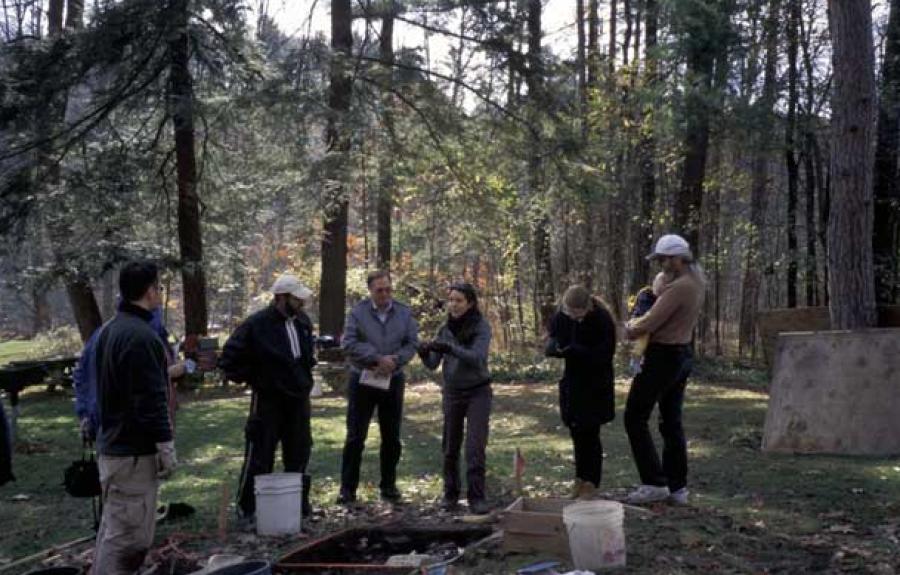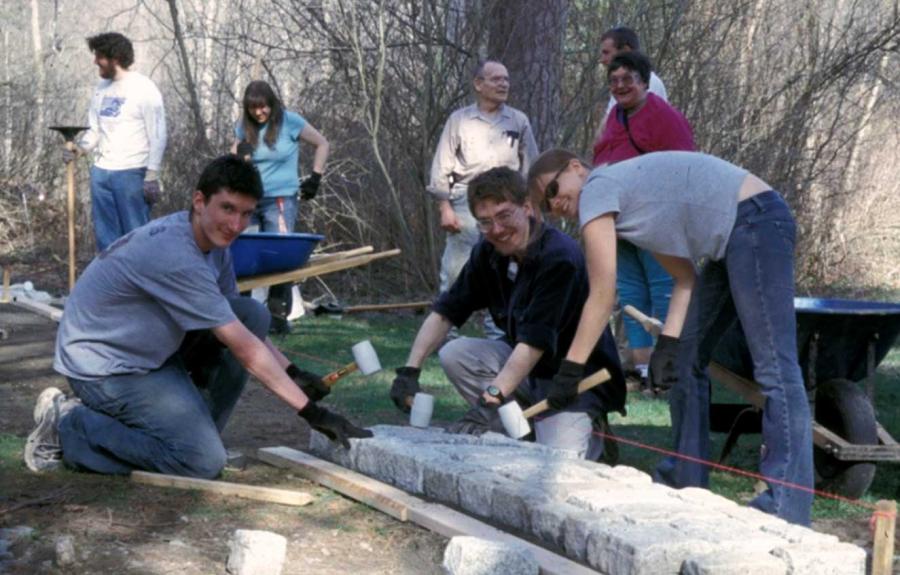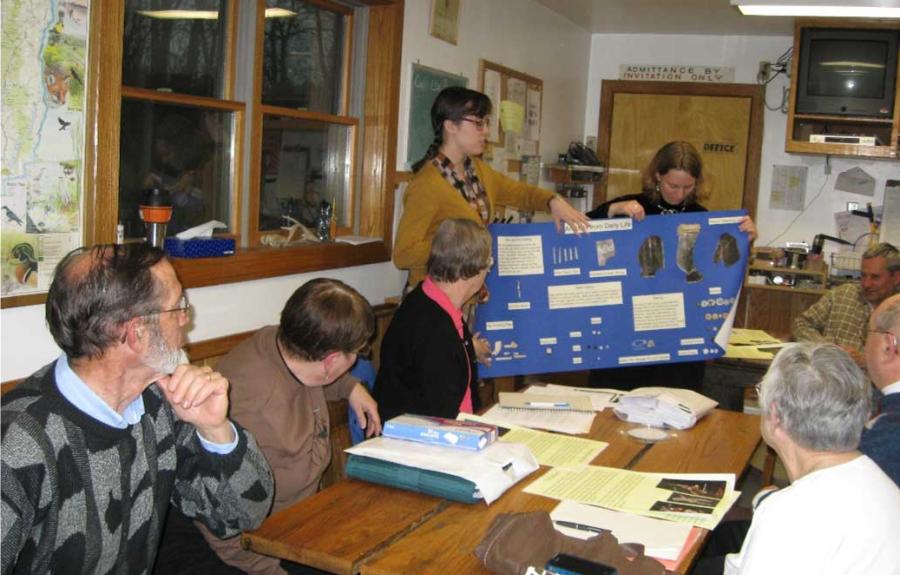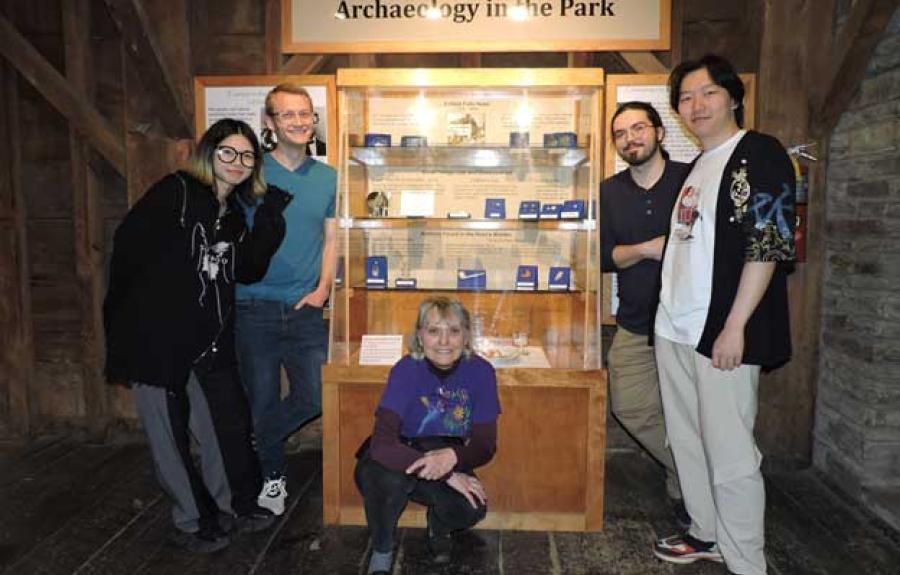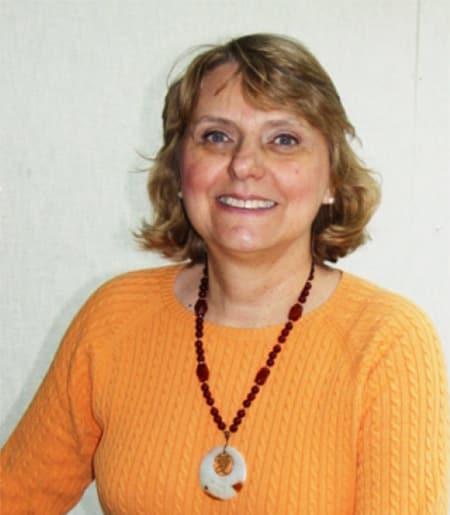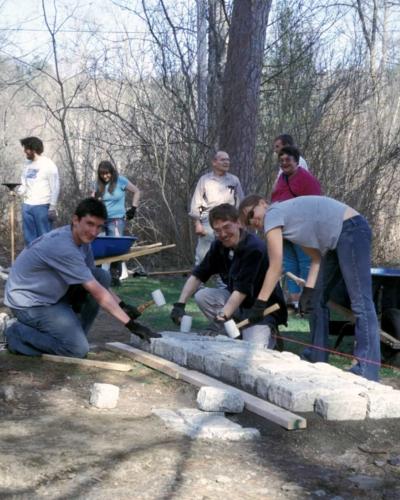Buried only a foot beneath the Upper Robert H. Treman State Park near Ithaca are the foundations and yards of a nineteenth-century hamlet- Enfield Falls. During World War I, properties in the heart of the hamlet were purchased by Robert Treman, and in 1920, he donated the land to create a state park (known today as the Robert H. Treman State Park).
However, not everyone forgot the community of Enfield Falls. Some descendants still live near Ithaca and belong to The Friends of Robert H. Treman State Park (“the Friends”) - a nonprofit organization working closely and cooperatively with park staff on projects that cannot be accomplished within the limited park budget. These include giving tours of the mill, researching park history, producing pamphlets, providing lectures, and writing grants to preserve the fabric of the historic mill, now the mill museum. The organization also includes local naturalists, environmentalists, educators, filmmakers, and preservationists.
The Friends, park staff and Prof. Sherene Baugher (Cornell University) initiated the “Discovering Enfield Falls” project to change the park's perception as a natural landscape without a social history. As part of the project, since 1998, Cornell University students, under the guidance of Prof. Baugher and in consultation with the Friends and park staff, have excavated sites and designed museum exhibits at sites associated with Enfield Falls.
Over the last 25 years, students excavated six sites: (1) the blacksmith’s home (and the post office), (2) the Enfield Falls Hotel (owned and operated by a woman- Henrietta Wickham), (3) Henrietta Wickham’s home, (4) the Tryon House, (5) the Duncan/Bower site - a family home and general store, and (6) the Rumsey site - home of millers and farmers. The students also worked with community partners to (1) undertake historical and artifact research, (2) record oral histories, and (3) present archaeology to the public through lectures and museum exhibits during Heritage Days at the park (Fig. 1). Heritage Days also involved tours of the historic mill, gorges, and waterfalls (the former conducted by the Friends, and the latter two by park staff).
Reference:
Baugher, Sherene
2021 Discovering Enfield Falls: A Community Initiated Archaeological Heritage Project in Ithaca, New York. Journal of Community Archaeology and Heritage 8 (4): 271-289.
Community Service-Learning Courses:
The research undertaken in the Discovering Enfield Falls project is part of Prof. Sherene Baugher’s “Community Service-Learning Courses” model. She and her students have been involved in work of this nature since 1993. According to Prof. Baugher, archaeologists have presented archaeology to the public for decades through exhibits, public lectures, books written for the public, and television programs after excavations are completed. However, there has been a shift from presenting archaeology to the public to archaeologists working in collaboration with the public. Archaeologists have become involved in community-based archaeology, such as collaboration with descendant communities on exhibits and heritage projects. A shift has occurred in academic archaeology, with community service learning being integrated into classes where students still learn traditional field and laboratory methodology. Still, service-learning classes all result in tangible end products for local communities. Community members can become involved in different phases of the project or participatory action research; they become involved in all phases of the work, from co-designing the goals of the project to working together to implement the end products, such as exhibits, public lectures, brochures, research reports, and even films. Broadly speaking, ‘participatory action research in archaeology has been a goal within a variety of approaches, including ‘engaged archaeology,’ ‘community-based archaeology,’ ‘value-committed archaeology,’ ‘participatory archaeology,’ ‘participatory culture model,’ ‘community archaeology,’ ‘community heritage,’ and “activist archaeology.’

